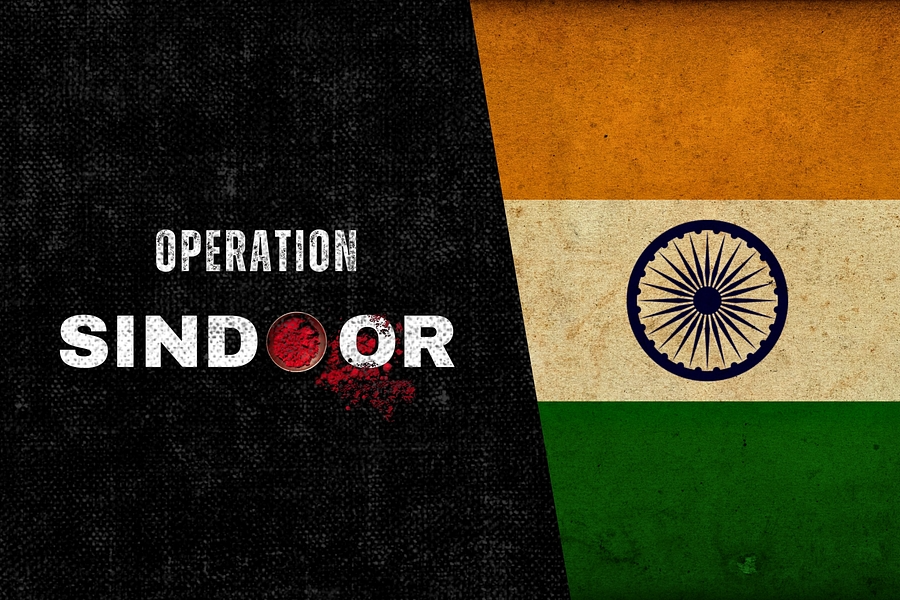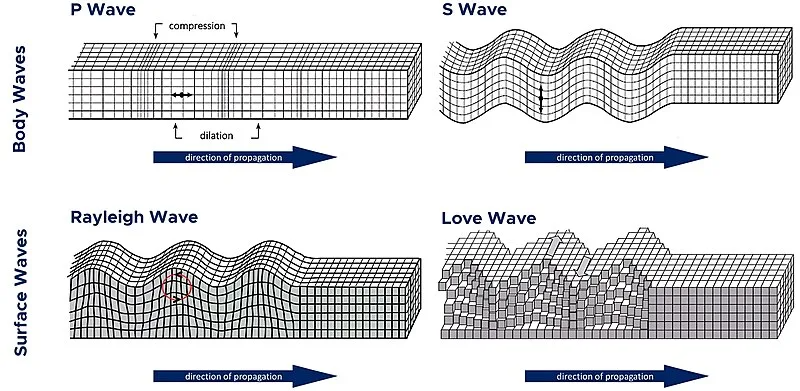July 29th Current Affairs
Table of Contents

Operation Sindoor
July 21st Current Affairs Home / Operation Sindoor Why in News? Parliament’s Monsoon Session, starting July 21, 2025, is expected to feature
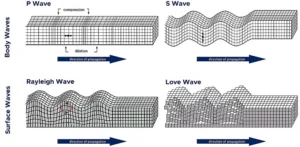
Alaska Earthquakes
July 21st Current Affairs Home / Alaska Earthquakes Why in News? On July 21, 2025, Alaska Peninsula was struck by

August 2, 2027 Solar Eclipse
July 21st Current Affairs Home / August 2, 2027 Solar Eclipse Why in News? A total solar eclipse is set

India’s milestone in clean energy transition
July 21st Current Affairs Home / India’s milestone in clean energy transition Why in News? India achieved a milestone by

‘Baby Grok’, child-friendly AI app
July 21st Current Affairs Home / ‘Baby Grok’, Child-friendly AI app Why in News? Elon Musk’s AI company xAI has announced
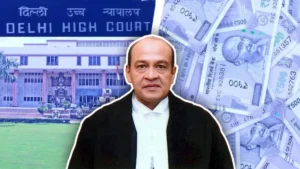
Impeachment proceedings against Justice Yashwant Verma
July 22nd Current Affairs Home / Impeachment proceedings against Justice Yashwant Verma Context On July 22, 2025, impeachment proceedings against
Monsoon’s Strong Performance Uplifts Kharif Prospects
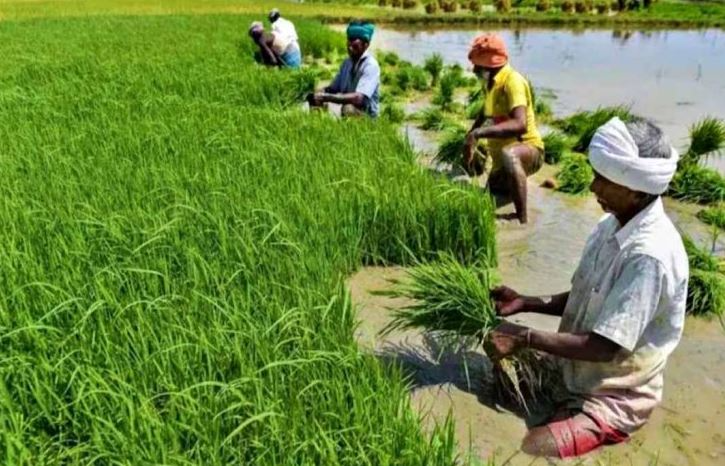
Context
As of July 28, 2025, India has recorded an all-India rainfall of 440.1 mm since June 1—8% above normal. While most regions enjoyed normal to above-normal rainfall, eastern and northeastern India faced significant deficiencies, raising concerns for those specific states’ agriculture. IMD data suggests a promising outlook for India’s kharif crops, vital to food security and the rural economy.
Background
The southwest monsoon (June–September) is pivotal for India, bringing about 75% of the country’s annual rainfall and recharging reservoirs, rivers, and groundwater. This rain is essential for the sowing and growth of kharif crops (paddy, pulses, cotton, etc.), which in turn influence rural incomes, inflation, and overall economic activity.
IMD’s Role
The India Meteorological Department (IMD) monitors, predicts, and informs the public about the progress of the monsoon using strategic tracking of weather systems (like depressions/low-pressure areas) and positions of monsoon troughs. The IMD’s accurate and timely updates aid in agricultural planning, water management, and disaster mitigation.
Reasons for Above-Normal Rainfall
- Back-to-back low-pressure systems and depressions have formed in the Bay of Bengal since late June.
- The monsoon trough (a belt of low pressure) stayed in its normal position, helping to sustain rainfall, especially over northern and northwestern India.
- Moisture-laden winds, favorable upper air conditions, and active atmospheric waves reinforced the rainfall.
Significance
- Agriculture: Ensures timely sowing and successful germination of kharif crops; minimizes drought risk.
- Water Security: Reservoirs and groundwater replenished.
- Economy: Good crops can moderate food inflation, stabilize rural consumption, improve agri-exports, and support GDP growth.
- Hydropower: Boosts generation and reduces thermal power dependency.
Technical Terms Explained
- Kharif Crops: Sown at the beginning of the monsoon and harvested in autumn (e.g., rice, maize).
- Monsoon Trough: An elongated area of low pressure that is crucial for rain distribution.
- Low-Pressure System/Depression: Atmospheric disturbances that concentrate moisture and cause rain.
Impacts on India and Agriculture
- Positive: States like Rajasthan, Himachal Pradesh, and Gujarat have seen robust rainfall, promoting healthy crop prospects.
- Challenges: East and Northeast (Punjab, Bihar, Arunachal, etc.) face deficits (-28% in July), risking patchy crop growth and water stress.
- Economic: Lower rainfall in deficit areas could increase stress, triggering localized crop failures, food scarcity, or price hikes.
Challenges
- Spatial variation: Despite a national surplus, some regions remain drought-prone.
- Flooding: Excess rain can lead to localized floods, destroying crops/infrastructure.
- Infrastructure: Poor irrigation coverage in eastern regions exacerbates vulnerability.
Influence of La Niña and El Niño
- El Niño (warming Pacific): Typically linked with weak monsoons and droughts.
- La Niña (cool Pacific): Often brings strong, widespread monsoon rains.
- Current Scenario: Indicators suggest neutral to weak La Niña, historically supportive of good rains, aligning with IMD observations this year.
Way Forward
- Monitoring: Continue robust IMD monitoring and early warning dissemination.
- Adaptation: Expand irrigation/network in rain-deficient regions; promote drought-resistant crops.
- Policy: Responsive MSP/procurement, crop insurance coverage, relief for deficit-affected regions.
- Research: Invest in climate-resilient agriculture to buffer monsoon volatility.
Prelims MCQ
Q. Consider the following statements about India’s 2025 monsoon season:
- All regions of India received above-normal rainfall during the 2025 monsoon season so far.
- The southwest monsoon is primarily influenced by low-pressure systems in the Bay of Bengal and the position of the monsoon trough.
- The IMD has reported that La Niña conditions were the primary driver for this year’s above-normal rainfall.
Which of the above are correct?
a) 1 and 2
b) 2 only
c) 2 and 3
d) 1, 2, and 3
Answer: b) 2 only
Explanation:
- Statement 1 is incorrect. While overall rainfall is above normal (+8%), East and Northeast India reported deficits (-28% in July, -23% this season) as per IMD, and several states therein remain rain-deficient.
- Statement 2 is correct. The monsoon’s strong performance is mainly attributed to back-to-back low-pressure systems and favourable positioning of the monsoon trough—key meteorological drivers.
- Statement 3 is incorrect. While La Niña conditions tend to enhance monsoon rainfall, IMD has not officially cited La Niña as the “primary” driver in 2025; rather, the immediate meteorological features (lows/depressions, trough) are credited. La Niña is generally supportive, but weather systems were more decisive this season.
Mains Question
Q. “Despite overall above-normal rainfall during the 2025 monsoon season, regional disparities in precipitation present challenges for India’s food security and economy”. Examine.
Surge in Credit Card Delinquencies in India

Context
India has witnessed a sharp rise in credit card delinquencies, which soared by 44% to ₹33,886 crore by March 2025. This signals emerging stress in the unsecured lending market amidst booming consumer spending, indicating both individual financial distress and systemic risks.
Background
- Credit card usage has grown significantly post-COVID due to digitisation, consumer optimism, and fintech expansion.
- Number of credit cards in circulation rose to 11.11 crore in May 2025, from 6.10 crore in January 2021.
- Credit card transactions surged to ₹21.09 lakh crore by March 2025, reflecting an increasingly credit-driven consumption economy.
Definition of Technical Terms
- Delinquency: Failure to make timely repayment of credit dues. In banking, over 90 days of non-payment marks a debt as a Non-Performing Asset (NPA).
- Unsecured Loan: A loan not backed by collateral. Credit cards fall into this category, making them riskier for lenders.
- Portfolio at Risk (PAR): A credit risk metric indicating the percentage of the total loan portfolio overdue beyond a specified period.
Financial Implications
Individual Level:
- Borrowers pay 42–46% annual interest if balances remain unpaid.
- Defaults damage credit scores, restricting access to future loans and job opportunities.
Banking Sector:
- Rising NPAs strain banks’ balance sheets.
- May trigger higher provisioning requirements and stricter lending norms.
Economy-Wide Impact:
- Affects consumption-led growth.
- Risks increasing household indebtedness without productive returns.
Economic Nuances
- Consumption Boom vs Wage Stagnation: Credit cards often compensate for stagnant real wages amidst rising inflation.
- Urban Middle-Class Behaviour: Higher lifestyle aspirations drive use of credit cards for discretionary purchases, often beyond repayment capacity.
- Fintech & Digital Lure: Easy onboarding, cashback, and EMI schemes encourage overspending.
Reasons behind the Surge
- Aggressive Marketing: Credit card offers with perks like lounge access, zero-interest EMIs, and cashback.
- Consumer Behaviour: Optimism about future income leads to high borrowing.
- Lack of Financial Literacy: Many users misunderstand billing cycles, interest calculations, and penalties.
- High Interest Rates: Failure to repay within the interest-free window results in exorbitant charges.
- Regulatory Gaps: Risk weights on credit card loans were raised in 2023, but consumer protections remain weak.
Challenges
- Lack of formal credit education.
- Risk of over-indebtedness among lower middle-class and youth.
- Fintechs focusing on customer acquisition over repayment capability assessment.
- Absence of regulatory caps on interest rates.
- Low savings rate juxtaposed with high consumerism.
Way Forward
- Financial Literacy Drives: RBI, banks, and fintechs must prioritise credit education.
- Regulatory Action: Cap interest rates, enforce stricter KYC norms, and monitor fintech-lending partnerships.
- Behavioural Nudges: App-based repayment reminders, gamification of credit discipline, etc.
- Balance Growth and Risk: Credit expansion should be coupled with responsible lending frameworks.
- Promote Alternatives: Encourage secured digital payments (e.g., UPI Autopay with debit cards) over high-risk unsecured credit.
Prelims MCQ
Q. Consider the following statements regarding credit card debt trends in India:
- Credit card loans are categorised as secured loans since they are backed by the user’s bank account balance.
- Credit card debt has witnessed a rise in delinquencies beyond 90 days, leading to potential classification as NPAs.
Which of the above is/are correct?
A. 1 only
B. 2 only
C. Both 1 and 2
D. Neither 1 nor 2
Explanation:
- Statement 1 is incorrect: Credit card loans are unsecured, meaning they are not backed by collateral such as bank account balances, property, or assets.
- Statement 2 is correct: According to RBI norms and CRIF High Mark data, delinquencies beyond 91 days in credit card repayments are classified as Non-Performing Assets (NPAs). The rise to ₹33,886 crore in such delinquencies signals stress in the unsecured lending sector.
Mains Question
Q. The rising credit card delinquency in India highlights both individual financial vulnerability and systemic risk. Analyse the factors contributing to this trend and suggest policy-level solutions for ensuring responsible credit growth in the economy. (250 words)
“New Normal” in India’s Counter-Terror Strategy: Operation Sindoor & Global Diplomacy

Context
In the wake of the April 22, 2025, Pahalgam terror attack which killed 26 civilians, India launched Operation Sindoor—a targeted response against terrorist infrastructure in Pakistan. External Affairs Minister S. Jaishankar termed it a “new normal” in India’s counter-terror doctrine, outlining five core principles and emphasizing global diplomatic wins, including TRF’s designation as a terrorist entity by the US.
Background
- The Pahalgam attack was claimed by The Resistance Front (TRF), a Lashkar-e-Taiba proxy.
- India responded with Operation Sindoor—a focused military action, reportedly non-escalatory yet impactful.
- Historically, India’s response to cross-border terrorism was constrained due to fear of escalation, especially under the nuclear threat from Pakistan.
Definition of Technical Terms
- Cross-Border Terrorism: Terrorist activities that originate from across a nation’s border.
- Nuclear Blackmail: Threat of using nuclear weapons to deter conventional retaliation.
- TRF: The Resistance Front—Pakistani-backed terror outfit.
- Non-escapatory Response: A military action limited in scope, avoiding large-scale war.
Five-Point “New Normal” Doctrine
- Terrorists won’t be treated as proxies.
- Cross-border terrorism will receive appropriate response.
- No dialogue except on terrorism.
- India will not yield to nuclear blackmail.
- Terror and good neighbourliness cannot coexist.
Diplomatic Implications
- UN Security Council Engagement: Though not a UNSC member, India lobbied for condemnation and accountability.
- US Designation of TRF: India’s diplomatic efforts led to TRF being globally designated as a terror group.
- Only three UNSC members opposed Operation Sindoor—a significant diplomatic success.
- Projected India’s capacity to shape global counter-terror norms without active UNSC membership.
Reasons behind assertive Strategy
- Past Inaction: Comparisons with post-26/11 inaction by UPA.
- International Shift: More countries now support targeted counter-terror responses post-9/11 and Afghanistan withdrawal.
- Domestic Expectation: Rising demand for decisive actions post Pulwama and Uri.
- Changing Threat Profile: Pakistan-China strategic alignment and hybrid warfare tactics necessitate robust posturing.
Economic Nuances
- Reduced Investor Risk Perception: A strong national security doctrine boosts investor confidence.
- Defence Spending: Precision operations require technological investments but are economically more viable than full-scale war.
- Sanctions and Trade Pressure: Diplomatic victories can lead to economic isolation of terror-sponsoring states.
Significance
- Strategic Messaging: Clear red lines drawn on terrorism.
- Doctrinal Shift: Moves beyond passive diplomacy to proactive retaliation.
- Global Norm-Setting: Reinforces “no safe haven for terrorists” as a diplomatic principle.
- Domestic Unity: Emphasizing cross-party consensus in the war against terror.
UN Resolutions Involved
- UNSC Resolution 1373 (2001): Obligates states to deny safe havens and financial resources to terrorists.
- UNSC Resolution 1267 (1999): Lists global terrorist individuals and groups like Lashkar-e-Taiba and TRF.
India invoked these resolutions to pressurize global powers for action.
Constitutional Provisions
- Article 51(c): Encourages respect for international law and treaty obligations.
- Article 355: Empowers the Union to protect states against external aggression and internal disturbance.
- Entry 1 & 2, Union List: External affairs and defence are Union subjects, giving the Centre complete authority.
Impacts on India and the World
- India: Enhanced global image, strategic deterrence, bolstered diplomatic credibility.
- World: Sets precedent for legitimate counter-terror responses; strengthens global counter-terror alliances.
Challenges
- Two-Front Threat: Coordination between China and Pakistan adds complexity.
- Political Narrative: Domestic unity is being tested by political blame games.
- UNSC Non-membership: Limits India’s formal influence, especially with China often blocking listings.
- Risk of Escalation: Even measured responses can spiral if not managed diplomatically.
Way Forward
- Sustained Global Diplomacy: Continue leveraging multilateral forums to isolate terror sponsors.
- Technological Upgradation: Invest in precision-strike capability, ISR (Intelligence, Surveillance & Reconnaissance).
- Political Consensus: National unity is crucial in projecting resolve and deterrence.
- Civil Society Awareness: Public education on hybrid warfare and online radicalisation.
- UN Reforms: Push for permanent UNSC membership to institutionalize India’s role in global security.
Prelims MCQ
Q. Consider the following statements regarding India’s recent counter-terror response:
- Operation Sindoor marks the first time India retaliated against cross-border terrorism under the doctrine of nuclear deterrence.
- The Resistance Front (TRF), which claimed the Pahalgam attack, has been designated as a global terrorist group by the United Nations Security Council.
Which of the above is/are correct?
A. 1 only
B. 2 only
C. Both 1 and 2
D. Neither 1 nor 2
Explanation:
- Statement 1 is incorrect: India has previously retaliated post-Uri (2016 surgical strikes) and Pulwama (2019 Balakot airstrike), both under the nuclear deterrence backdrop. Operation Sindoor follows a pattern, not an unprecedented move.
- Statement 2 is incorrect: The US, not the UNSC, designated TRF as a global terrorist group. China’s presence on the UNSC often blocks Indian-backed designations.
Mains Question
Q. Operation Sindoor has been termed a “new normal” in India’s counter-terrorism approach. Examine the evolution of India’s counter-terror policy and discuss the role of global diplomacy in shaping credible deterrence. (250 words)
Unclaimed Deposits in Indian Banks Cross ₹67,000 Crore — A Growing Concern

Context
As of June 2025, unclaimed deposits in Indian banks have surged to ₹67,003 crore, with the State Bank of India alone accounting for 29% of this amount. This rising pile of inactive funds has prompted both regulatory intervention and public concern regarding transparency, awareness, and the future use of these deposits.
Background
- Unclaimed Deposits are funds in savings/current accounts or term deposits that remain inactive or unclaimed for 10 years or more.
- Such deposits are transferred to the Depositor Education and Awareness Fund (DEAF) maintained by the Reserve Bank of India (RBI).
- Public Sector Banks (PSBs) hold 87% of the total, with SBI alone holding ₹19,329.92 crore.
- The surge began around FY 2022–23, with yearly contributions to DEAF jumping from ~₹4,500 crore to over ₹12,000 crore.
Definition of Technical Terms
- Unclaimed Deposit: Any banking deposit not operated for 10 years in the case of savings/current accounts or not claimed within 10 years after maturity in case of term deposits.
- DEAF (Depositor Education and Awareness Fund): A fund created under RBI to utilise unclaimed deposit amounts for educating and protecting bank depositors.
- UDGAM Portal: “Unclaimed Deposits – Gateway to Access Information”, a centralised digital platform launched by RBI to help individuals trace unclaimed deposits across banks.
Reasons for the Rise
- Deaths of account holders without a nominee declaration.
- Migration and failure to update records or contact banks.
- Dormancy in joint accounts due to disputes or lack of awareness.
- Poor digital/financial literacy, especially among senior citizens.
- Lack of unified search infrastructure until UDGAM was launched.
Economic Nuances
- These funds are non-performing from the depositors’ perspective, yet banks can earn interest on them until they are transferred to DEAF.
- While the RBI manages the funds, the lack of consumer retrieval weakens trust in the banking system.
- The delay in claims distorts the true savings rate and gives a misleading sense of liquidity in the system.
Implications
- For Individuals: Loss of rightful financial assets, especially for heirs.
- For Banks: Reputational damage, increased compliance burden, reduced trust.
- For Government/RBI: DEAF accrues a large corpus, but utilising it for genuine education vs compensation is under scrutiny.
- For Economy: Hinders optimal capital allocation; depositors’ savings do not enter consumption or investment cycles.
Significance
- Reflects India’s need for robust estate planning, digital inclusion, and bank-customer interface improvements.
- The magnitude (₹67,000+ crore) reflects an alarming gap in financial traceability and outreach.
- The launch of UDGAM and the “100 Days 100 Pays” campaign by RBI shows growing institutional recognition of the issue.
Impacts on India
- Financial Inclusion is weakened if citizens lose access to their funds.
- Trust in formal banking could reduce, particularly in rural areas.
- Encourages better nomination practices and digitised tracking.
- May catalyse reforms in how banks report and disclose dormant accounts.
Challenges
- Inter-generational data gaps due to poor nomination/documentation.
- Legal delays in claim settlements, especially in the absence of wills.
- Lack of awareness about DEAF and UDGAM.
- Technological barriers for rural and senior citizens to access online portals.
- Coordination between banks, customers, and government portals remains inefficient.
Legal and Constitutional Provisions
- Banking Regulation Act, 1949: Gives RBI regulatory oversight on bank operations.
- DEAF Scheme, 2014: RBI’s operational framework to transfer and manage unclaimed deposits.
- Article 41: Obliges the state to ensure public assistance in old age and sickness, connected to protecting elderly depositors.
Way Forward
- Mandatory nomination and annual update mechanisms.
- Public awareness campaigns at local banking levels.
- Simplify the claim process under DEAF, especially post-mortem.
- Strengthen UDGAM’s usability via regional language support and offline help centers.
- Parliamentary oversight to monitor DEAF usage and ensure ethical fund utilisation.
Prelims MCQ
Q. Concerning unclaimed bank deposits in India, consider the following statements:
- Unclaimed deposits are transferred to the Depositor Education and Awareness Fund after a dormancy period of 5 years.
- The UDGAM portal allows depositors to search across multiple banks for their unclaimed deposits.
Which of the above is/are correct?
A. 1 only
B. 2 only
C. Both 1 and 2
D. Neither 1 nor 2
Explanation:
- Statement 1 is incorrect: The correct dormancy period before a deposit is deemed unclaimed is 10 years, not 5 years.
- Statement 2 is correct: The UDGAM portal, launched by the RBI in 2023, is a centralised platform that allows users to track their unclaimed deposits across banks.
Mains Question
Q. The rising quantum of unclaimed deposits in Indian banks reflects deeper challenges in financial literacy and estate planning. Analyse. (150 words)
NEP Turns 5: Gains, Gaps & Ground Realities
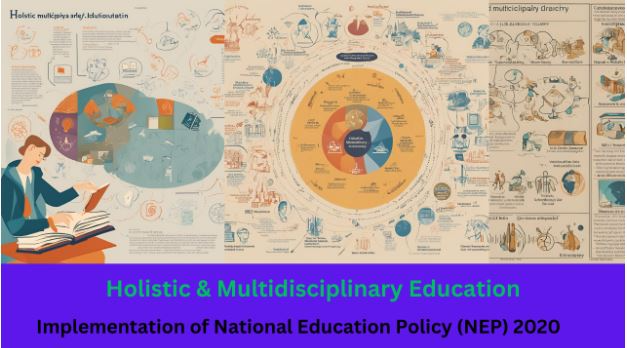
Context
The National Education Policy (NEP) 2020 marked its fifth anniversary on 29 July 2025. Envisioned as a transformative overhaul of India’s education system, NEP 2020 aimed at aligning education with 21st-century demands. While some flagship initiatives have been rolled out, ground-level implementation remains fragmented.
Background
NEP 2020 is India’s third national education policy, following 1968 and 1986 (modified in 1992). It was formulated by a committee led by K. Kasturirangan and released amid the COVID-19 pandemic. The policy spans early childhood to higher education and vocational training, aiming to increase Gross Enrolment Ratio (GER), promote foundational literacy and numeracy (FLN), enable multidisciplinary learning, and integrate Indian knowledge systems.
Implications
- Federal Tensions: NEP implementation has triggered Centre-state conflicts (e.g., Tamil Nadu, Kerala) over language and autonomy.
- Curriculum Shift: A push for “decolonised” curricula has sparked ideological debates.
- Institutional Restructuring: Introduction of four-year UG programs, Academic Bank of Credits, and Common University Entrance Test (CUET) reshapes traditional models.
- Access vs Equity: Digital divide and uneven infrastructure pose risks of deepening educational inequality.
Reasons for Delay
- Education is a concurrent subject, requiring coordination between the Centre and states.
- Absence of a statutory body like the Higher Education Commission of India (HECI).
- Financial constraints, teacher shortages, and lack of training, particularly in government schools.
Educational Nuances
- New Structure (5+3+3+4): Replaces 10+2, emphasizing ECCE and foundational learning.
- Language Policy: Three-language formula and regional medium instruction face political pushback.
- Holistic Assessments: Continuous, peer-reviewed evaluations replace rote testing via PARAKH and Holistic Progress Card (HPC).
- NIPUN Bharat: National Initiative for foundational skills by Class 3.
Significance
- Potential to shift India’s education from rote learning to competence-based learning.
- Enhances global competitiveness through internationalisation and digital integration.
- Integrates Indian culture and indigenous knowledge with modern education.
Definition of Technical Terms
- Academic Bank of Credits (ABC): A digital repository of credits earned by students.
- PARAKH: Assessment body under NCERT for tracking student performance.
- NCrF (National Credit Framework): Framework integrating formal/informal learning into a credit system.
Impacts on Students
- Flexibility in education journey with multiple exit-entry points.
- Students from rural or underprivileged backgrounds benefit from CUET’s level-playing field.
- New vocational and multidisciplinary exposure but concerns over dilution of academic rigor.
Challenges
- Fragmented implementation and resistance from some states.
- Digital divide in infrastructure, especially in government schools.
- Logistical hurdles in implementing two-board exam model and four-year UG transition.
- Concerns over quality dilution, especially in PhD pathways bypassing Master’s/MPhil
Relevant Laws & Constitutional Provisions
- Article 21A: Right to Education (RTE) for children aged 6 to 14.
- Article 28-30: Rights related to education in minority institutions.
- Concurrent List Entry 25: Allows both Centre and states to legislate on education.
- RTE Act, 2009: Covers free and compulsory education with quality norms.
Way Forward
- Finalise and implement HECI for regulatory clarity.
- Increased Centre-state cooperation and flexibility in implementation.
- Address infrastructural gaps, especially in rural and government schools.
- Institutionalise teacher training and digital capacity building.
- Independent monitoring and evaluation mechanisms to track NEP progress.
Prelims MCQ
Q. Consider the following statements regarding NEP 2020:
- The Higher Education Commission of India (HECI) has been established as the apex regulator for higher education under NEP 2020.
- The National Education Policy 2020 mandates education in Hindi as a third language across all schools.
Which of the statements given above is/are correct?
A. 1 only
B. 2 only
C. Both 1 and 2
D. Neither 1 nor 2
Answer: D. Neither 1 nor 2
Explanation:
Statement 1 is incorrect. While NEP 2020 proposes the establishment of the Higher Education Commission of India (HECI) as a single-window regulator for all higher education (excluding medical and legal), it has not been set up yet. The Bill for HECI is still under government review, and no law has been passed to operationalise it.
Statement 2 is also incorrect. NEP 2020 proposes a flexible three-language formula, encouraging students to learn three Indian languages. However, it does not mandate Hindi or any specific language. Southern states like Tamil Nadu have opposed this, fearing Hindi imposition, despite the policy’s clarification that there is no such compulsion. In fact, language choice is to be decided by states, institutions, and parents, keeping students’ needs in mind.
Thus, both statements are factually incorrect, and the correct answer is D.
Mains Question
Q. Five years since its launch, the National Education Policy (NEP) 2020 has laid the foundation for transformative reform, yet its impact remains uneven across India. Critically evaluate. (250 words)



